-
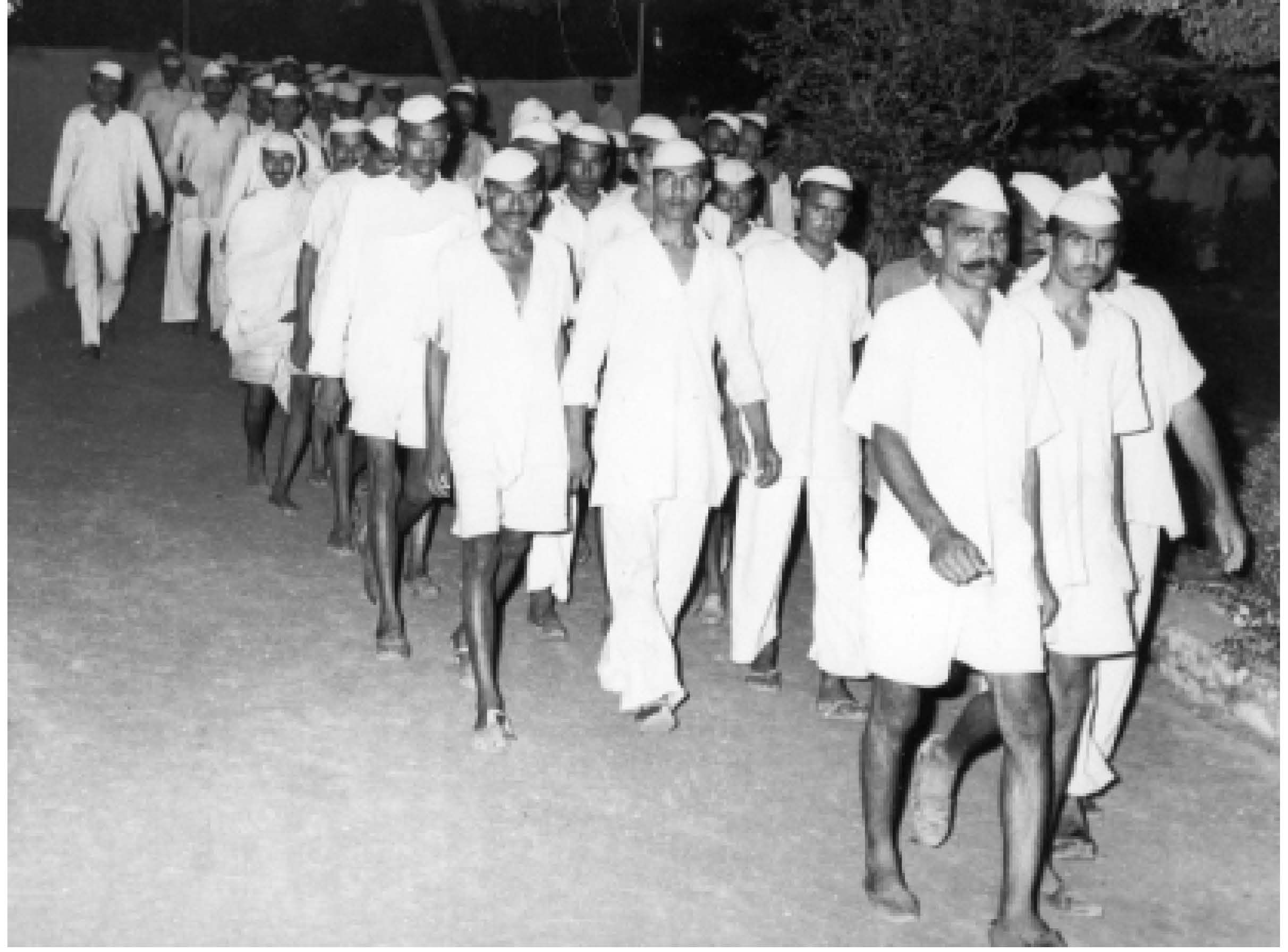
The Beginning
The consistent efforts of Mr. Ram Singh, the then Home Secretary of Rajasthan, resulted in holding the first Vipassana course in Jaipur Central Jail in October 1975. In spite of numerous administrative challenges, this first ever prison course was attended by 114 inmates. After the success of the first course, subsequent courses were organized for life-term convicts, senior police officers and correction officials. The impressive results of these courses pioneered the use of Vipassana as an instrument of reform in correctional facilities in India and across the world. Read more...
-
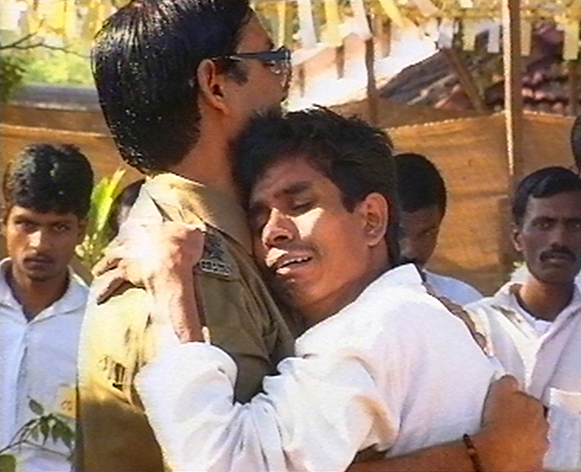
Rajasthan & Gujarat
Seven prison courses were organized in the states of Rajasthan and Gujarat, after a gap of more than a decade. These courses were the subject of several sociological studies conducted by the Gujarat State Department of Education and the University of Rajasthan. The research indicated definite positive changes of attitude and behavior in the participants, harmonious relations among the prisoners and jail staff, and a dramatic increase in self-discipline, demonstrating that Vipassana can help criminals become wholesome members of the society. Read more...
-
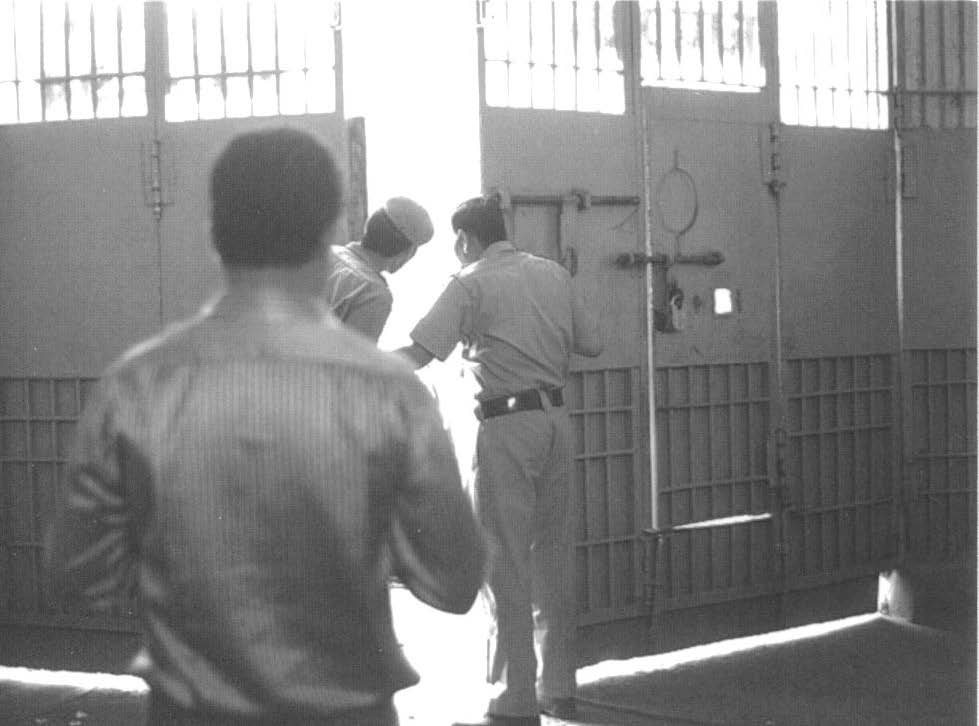
Tihar Jail
The first Vipassana course conducted in Tihar jail, New Delhi, one of the largest jails in Asia, housing approximately 10,000 inmates, was under the dynamic and exemplary leadership of Dr. Kiran Bedi, then Inspector General of Prisons. Motivated with a conviction that prisons should be institutions of rehabilitation, not punishment, Dr. Bedi arranged the first course for 96 inmates and 23 jail staff. The success of the first course led to a second course in January 1994 in which 300 inmates participated. Read more...
-
Dhamma Tihar
Encouraged with results of earlier courses, Dr. Bedi arranged for the largest Vipassana course in Tihar Jail which was conducted by Mr. & Mrs. Goenka and thirteen assistant teachers for over 1000 inmates. In spite of severe weather conditions, the course completed successfully resulting in the establishment of a permanent Vipassana Center, Dhamma Tihar, in the premises of Tihar jail, the first ever Vipassana center to be developed in the prison. After witnessing the impressive results of the course, the Ministry of Home Affairs adopted the proposal to introduce Vipassana as a reform measure in all the prisons in the country. Read more...
-
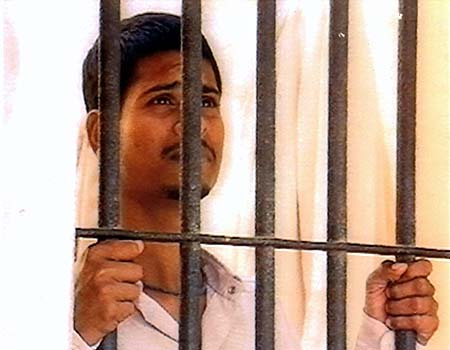
Taiwan
The first 10-day Vipassana course was held at Ming Te Branch Prison, an experimental drug rehabilitation institution housing inmates convicted of narcotics use, in the lush, wooded mountains situated near Tainan on the southwestern coast of Taiwan. 24 inmates attended the course and in a move unprecedented in Taiwan penal history, Mr. S. N. Geonka was invited to give the closing address to the participants of the course. Read more...
-
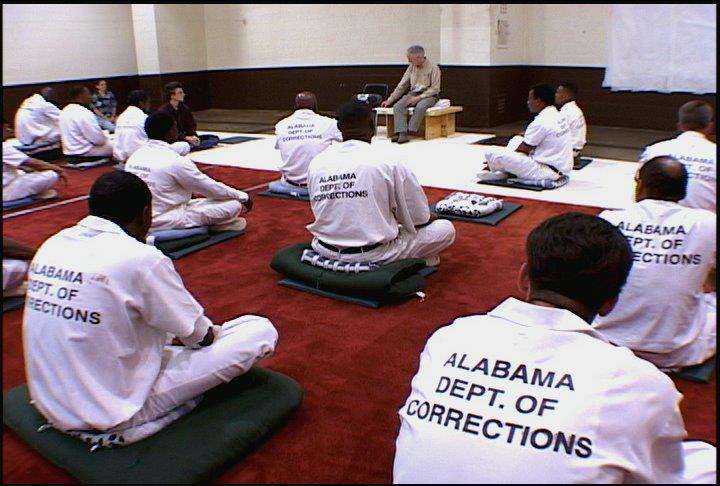
USA
The first Vipassana course in US prison was organized in North Rehabilitation Facility (NRF), Washington. The success of the first course resulted in the arrangement of regular courses in NRF and the organization of Vipassana courses in other correctional facilities including San Francisco Jail #7, California and W.E. Donaldson Correctional Facility, Alabama, a maximum-security facility. This year also witnessed establishment of North American Vipassana Prison Trust, which offers 10-day Vipassana programmes at correctional facilities in North America. Read more...
-

United Kingdom
The first 10-day Vipassana prison course in Europe was conducted at Lancaster Castle Prison, one of the places with the longest record of continuous use for incarceration in the world, in United Kingdom. Eight inmates attended the course. Despite inconveniences, they worked seriously and gained greatly from the experience. The Prison Journal Service, issue 127 reported that Lancasters Education Department had noted that there was a marked change for the better in personal discipline, willingness to learn and quality of output from the course participants. Read more...
-

New Zealand
The first Vipassana course was organized in ‘Te Ihi Tu’, a rehabilitation center in New Plymouth, a city on the North Island of New Zealand, run by Maoris (the indigenous people of New Zealand), for Maori pre-release prisoners and parolees. Vipassana course forms a part of their three-month pre-release program, which starts with a ten-day Vipassana Meditation course. Since 1999, multiple Vipassana courses were held at Te Ihi Tu, making it an integral part of their program. Read more....
-
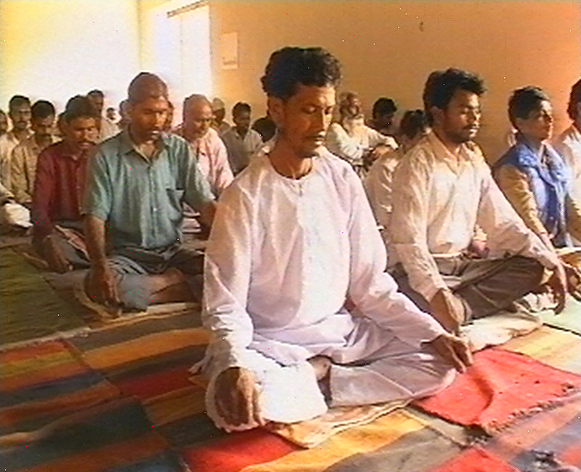
Thailand
Influenced by the film “Doing time, Doing Vipassana”, Inspector General of Prisons was instrumental in arranging the first Vipassana course at Kolong Pai Prison in Sikhiu District, northeast of Bangkok. Forty-nine male drug offenders and two prison staff attended this course. The success of this course resulted in conducting a second course for 50 women at a separate women’s facility two months later. The Inspector General of prisons attended this course choosing to occupy a prison cell with basic toilet facilities just like the other students. Read more...
-
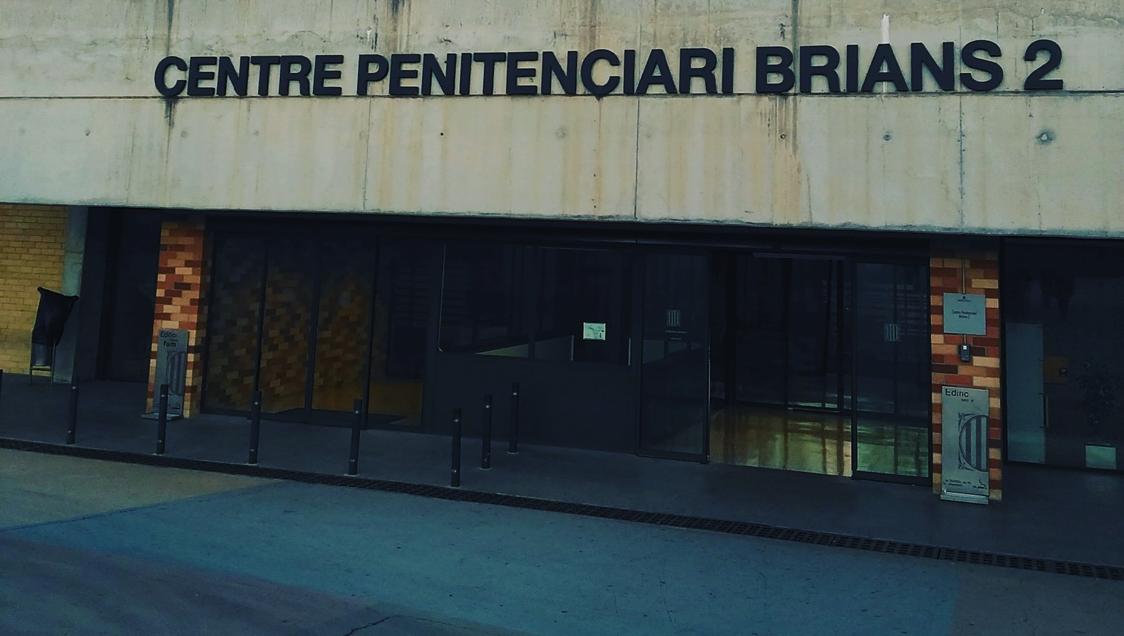
Spain & Mexico
The first 10-day course in Spain was conducted at Can Brians Jail, high-security facility near Martorell, Barcelona. The consistent efforts of an old student were instrumental in arranging this course. Attended by 18 inmates, this course was a great success in spite of some difficulties. In the same year, the first prison course was organized in Mexico at Penal de Santiaguito facility. Known for its willingness to experiment with various reform instruments, this facility, housing about 1,500 inmates, accepted Vipassana meditation with open arms. Read more...
-
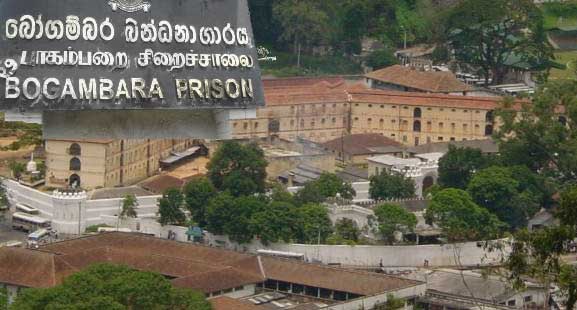
Sri Lanka
Bogambara, a maximum security prison and the second-largest correctional facility, situated in the old city of Kandy in the Central Province arranged the first 10 day Vipassana course for 46 inmates in Sri Lanka. On the last day of the course, meditators were provided with an opportunity to share their experience of the course to the gathering, which included a former Chief Justice of Sri Lanka and a former Commissioner of Prisons. Read more...
-
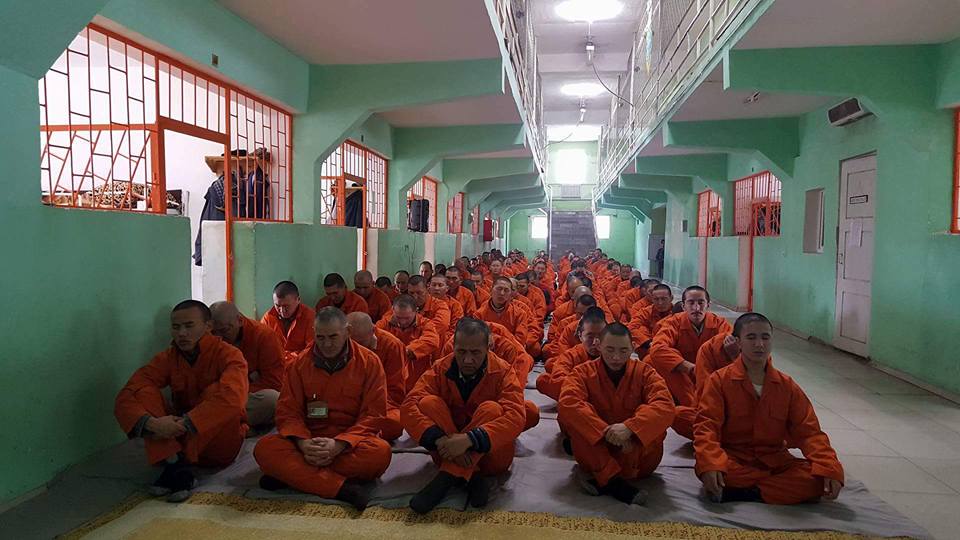
Mongolia
The first 10-day Vipassana course in the female only correctional facility in Mongolia was conducted as a result of a direct order from the Minister of Justice. The first course was followed by a second course in 2007 which was attended by 25 inmates. At the end of the course, many students expressed responsibility and regret for crimes committed, mistakes made and resentment that they had suffered for many years. The department of justice also made arrangements for inmates of mens’ prison to enable them to join a 10-day course. Read more...
-

Israel
The first Vipassana Course was conducted in December 2006 at Hermon Prison, a minimum-security rehabilitation facility located in a quiet area of Lower Galilee, after almost a decade of consistent efforts. Inspite of some initial difficulties, 13 inmates, including recovering addicts and repeated offenders from different religious backgrounds successfully completed the course. After successful completion of the first course, the second course was arranged in Hermon Prison during April-May 2007. Non-meditators attending the closing ceremony were struck by the change in the students. Read more...
-

Myanmar
The first 10-day Vipassana course was successfully organized at Insein Central Prison, Yangon, Myanmar, in July 2008 and a center was established within the prison. On July 27, 2008, Anapana course was also held for 169 young male inmates. This Center was followed by two more permanent Vipassana centers in prisons. Dhamma Rakkhita, (Guardian of Dhamma) was established in Thayawaddi Prison in Bago division in 2009 and Dhamma Vimutti (Liberation by Dhamma), was established in Obo Jail, Mandalay in 2010. Read more...
-
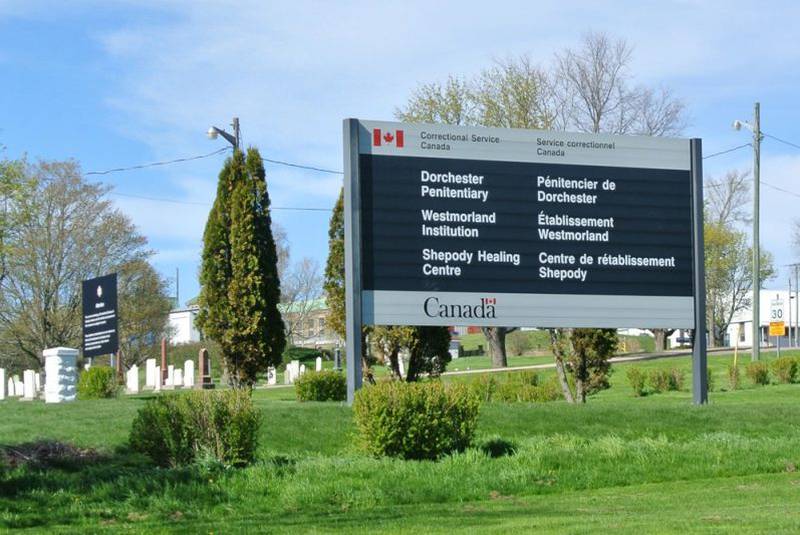
Canada & Colombia
Westmorland Institution in eastern Canada hosted the country's first Vipassana meditation course to be held in a correctional facility. In the same year, the first Vipassana Course was conducted in March 2011 at Reclusión de Mujeres, a women‘s prison in Pereira, one of Colombia's most violent cities. The changes witnessed by the Director of the women’s prison in the participants of Reclusión de Mujeres prison, convinced her of the value of the program, and later she attended a 10 day Vipassana course herself. Read more...
-
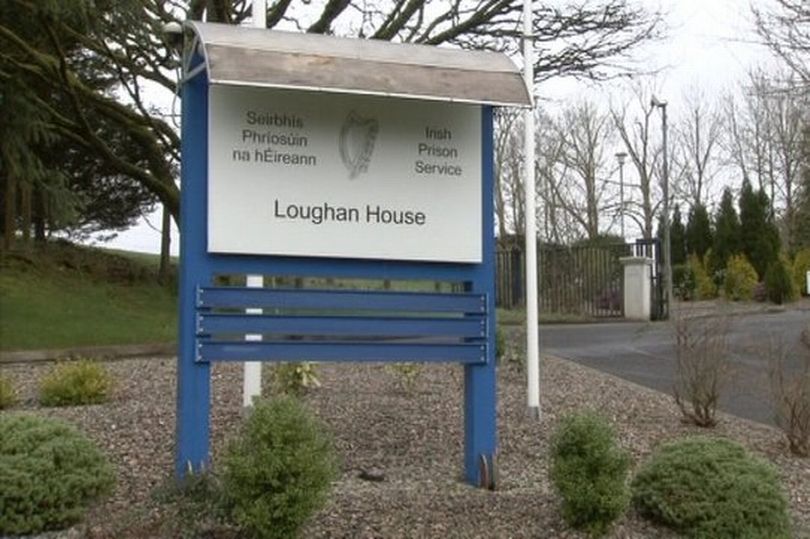
Ireland
In August 2015, three years of patient effort came to fruition when a Vipassana course took place at a low-security prison in Loughan House in Blacklion, County Cavan. The success of the first course paved the way for future courses in Ireland. Meanwhile, group sittings continued at Loughan House, and several of the participating inmates were allowed leave to join a three-day course in Dublin. Read more...
Challenge from Vinoba Bhave
In the first few years after Goenkaji came from Burma to teach in India, a course was arranged by the daughter-in-law of Mahatma Gandhi at Sevagram Ashram in which, fifteen of Gandhiji’s colleagues participated.
They were very pleased with the course. After it was over, they took Goenkaji to meet Vinoba Bhave, a saintly person of India, who lived nearby.
He was quite enthusiastic about Vipassana and said that if it was beneficial and result-oriented, it must spread in the country. But he added, “I won’t accept this Vipassana unless it gives good results to two segments of the society: hardened criminals and school children." Goenkaji replied, “I am certain it will be helpful. I am a newcomer to the country; I have brought this valuable jewel of Dhamma from outside. Now, let us make use of it for the country. Please make the arrangements.”
Vinoba Bhave arranged a course for teenagers. As with the many courses for children since then, this too was successful and he was very happy. Then he arranged for a course to be held in Gaya Jail. But the day before the course started, the jail officials informed Goenkaji would have to stay outside the prison. Goenkaji said, “This is not possible. Vipassana is a deep operation of the mind, and I am like a surgeon. I must be there twenty-four hours a day. Something might happen, and I am responsible. I must stay inside.” They insisted, “According to the prison rules, you cannot stay inside.” Goenkaji pleaded with them, “Then give me a prison sentence of ten days!” But they wouldn’t agree. Vinobaji wanted to make some other arrangements, but before he was able to do so, he passed away.
Fortunately, a few years later, the then Home Secretary of Rajasthan, Ram Singh, came to a course in Jaipur. He was very keen. He said: “This must be tried with criminals!” He also heard about the challenge from Vinobha Bhave. He organized the first courses, which were held in the Jaipur Central Jail; the rules were amended to permit Goenkaji to stay inside the prison for the full ten days. So this was how the courses in prisons began.
First Vipassana Course in Prison
(The following excerpt refers to the first Vipassana course in an Indian prison. The course was conducted by Mr. S.N. Goenka at the Jaipur Central Jail in October, 1975, and was arranged by Mr. Ram Singh, who was at that time, the Home Secretary of the State of Rajasthan. The following narration is written by him.)
The first course of Vipassana conducted by Goenkaji in a prison was in l975 at the Central Jail of Rajasthan. When I was the Home Secretary of that state, I had myself undertaken a Vipassana course, and experienced a profound change in myself. On the fourth day of my course, I felt that Vipassana was a technique which could solve not only individual problems but also problems of society, and could bring reform in government as well. On the evening of the fourth day, I met Goenkaji and shared my reflections with him. I asked him whether this technique could be a tool to change the system in government. He agreed, and I immediately asked whether we could arrange to hold a course in a jail. He was very positive and told me he would come if I arranged it. This was a big challenge!
I set about talking to the authorities concerned-the Chief Minister, the Chief Secretary, the jail officials. Initially everybody was very skeptical, but finally a decision was taken to make an experiment!
The real difficulty came when Goenkaji arrived in Jaipur for the course. I had to tell him that it would not be possible for him to stay in the jail; he was to stay in a beautiful bungalow outside the jail instead. He said he had to stay inside the jail twenty-four hours a day, because Vipassana is a deep operation, and he is like the surgeon. The difficulty was the jail manual. Only those who had been sentenced to imprisonment or those under trial or members of the jail staff could stay in the jail. I posed the problem to Goenkaji and he said, "Sentence me!" I was aghast, shocked; how could my Teacher be sentenced to imprisonment? The legal department was consulted and it seemed there was no solution. We issued administrative instructions and resolved the problem.
Goenkaji was allowed to stay in the jail, in a makeshift room in the jail dispensary. Another problem came when the course was just about to start. At that time ankle locks and handcuffs were used for hardened criminals. Four such prisoners were brought into the meditation hall bound in these iron handcuffs and ankle locks. Goenkaji was walking nearby and when he saw this, he was amazed. He asked me what was going on. I told him these were hardened criminals. He exclaimed, "How can people in chains be put before me? This cannot happen. Remove the chains!"
But the Inspector General of Prisons (IG) said that the security in the jail was his responsibility, and he could not remove the ankle chains or the handcuffs. However, Goenkaji was firm. He said he could not give Dhamma with people sitting before him in chains-he had come to remove the chains. The IG told him he could remove the chains from within, but not the outside chains! Goenkaji insisted that those who were meditating must not be in chains. This was a big dilemma, a big problem!
The IG was a very experienced officer. He asked me not to force him to relax security requirements for those prisoners. He said any one of them might try to be a hero, and strangle me or Goenkaji to death in a split second. We discussed the problem and finally came to an agreement to remove the chains and fetters. An armed guard would be kept ready at a strategic point to shoot the criminal if he started to advance menacingly. I told the IG to ensure that any mishap or panic shooting did not take place.
The chains and locks were removed. Goenkaji was pleased. The course started. I sat close by. The IG stayed out of the hall but remained very close. My eyes were fixed on the "Four", heart throbbing and deep anxiety within! But every passing moment was a relief unbounded. As Goenkaji started chanting, his metta [loving kindness] was flowing profusely. The red-hot eyes of the criminals who were the cause of so much turmoil changed and their faces beamed; tears streamed down their cheeks. Tears rolled down my face also; it was a rare moment filled with joy after such high tension. The efficacy of Vipassana was established! Goenkaji's narration of Angulimala's story flashed in my mind.
There was another event which was deeply moving. There were two condemned prisoners awaiting execution of the death sentence. They couldn't be accepted in the course. During his morning round, Goenkaji passed through their cells and decided that they could be given Anapana and Vipassana in the cells by loudspeaker from the hall and we agreed. They started meditation, made great progress, and felt happy. They listened to the discourses in the cells, as did many others. We had arranged the relay of the discourses throughout the entire jail campus.
After the course was over, one of the condemned prisoners sent me a message that he had decided to withdraw his mercy petition to the President of India. He was ready to die. He now had Dhamma and felt totally fearless of his impending death! In the meantime his petition had been rejected, and the day of execution by hanging had been fixed. I was invited to witness the sad event. The prisoner came out of the cell smiling and in high spirits. He thanked the jail staff and went to the gallows with a cheerfulness never witnessed before.
Spread of Vipassana in Prisons around the World
India
The story began nearly 30 years ago in India. The first Vipassana courses in jails were conducted by Goenkaji in 1975 and 1977 for 120 inmates at the maximum-security Central Jail in Jaipur at the invitation of Mr. Ram Singh, then Home Secretary to the Government of Rajasthan. A third course for senior police officers and jail officials was also held at the Police Academy in Jaipur. Despite these first successful courses, no further prison courses were taught for nearly 15 years. Then in 1990 and 1991, seven more prison courses were held in the states of Rajasthan and Gujarat. These courses were the subject of several sociological studies conducted by the Gujarat State Department of Education and the University of Rajasthan. The research indicated definite positive changes of attitude and behavior in the participants, demonstrating that Vipassana can help criminals become wholesome members of society.
In November 1993, a ten-day course was conducted for 96 inmates and 23 jail staff at Tihar Jail in New Delhi, one of the largest jails in Asia, housing approximately 10,000 inmates. The following January, a second course for 300 inmates was conducted by six assistant teachers. Three months later in April 1994, the largest Vipassana course held up to then was conducted by Goenkaji and ten assistant teachers for over 1,000 inmates. After its successful completion a permanent center for Vipassana was established inside the jail itself. Since then, ten-day Vipassana courses have been conducted twice monthly at Tihar Jail and less regularly at more than 15 other jails in India.
In 1997, 75 Vipassana courses were conducted in Indian jails. At one point there were two permanent Vipassana centers in Indian jailsone at Tihar and the other at Nasik Jail in Maharashtra where Mohandas Gandhi had once been imprisoned. Because of administrative changes, the Vipassana program at Nasik Jail has been cancelled. However, in Delhi , Dhamma Tihar thrives and twenty-day courses are being held there on a regular basis. In 2001, there were a total of 39 jail courses in India with 1,420 inmates attending: 978 new and 442 old.
A research study entitled Psychological Effects of Vipassana on Tihar Inmates was conducted at the All India Institute of Medical Sciences in New Delhi in 1997. This study determined that Vipassana meditation helps increase inmates control of their emotions resulting in a reduction of feelings of anger, tension, hostility, revenge and helplessness. Drug addiction, neurotic and psycho-pathological symptoms also diminished. (Chandiramani, Verma, Dhar & Agarwal, 1995; Kumar, 1995; Vora, 1995) In addition, inmates practicing Vipassana have shown an increased willingness to work, to participate in other treatment programs, to abide by prison rules and to cooperate with prison authorities. (Vora, 1995)
The sheer number of inmates who have benefited from Vipassana is nearly matched by the number of police cadets who have attended courses at the Police Training Academy in New Delhi. By 2001, 17 courses, some of them for as many as 1,265 police cadets at a time, had been conducted.
With India as the exemplary leader in bringing Dhamma to prisoners, meditators began the work of spreading Vipassana into prisons around the world. Sometimes the efforts brought only one course, but the seed was sown. At other times programs continue with great success.
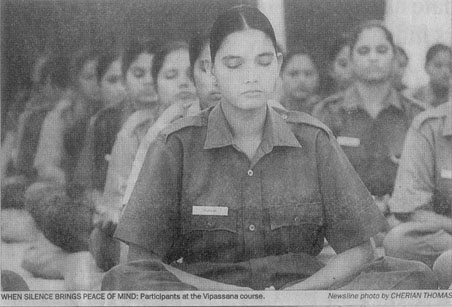
Police cadets meditating (credit to Newsline Photo by Cherian Thomas)
Nepal
The first jail course in Nepal was conducted in Nakkhu Jail premises for 20 inmates in November 1998. All participants successfully completed the course with great discipline. After two years of the first course, the second course was conducted in same place in 2000 in which 23 inmates successfully completed the course. Later on, jail courses could not be continued for long period. After 22 years, in January 2022, Ministry of Home Affair formally decided to allow Nepal Vipassana Center to conduct vipassana courses in Nepalese Jail premises. After the Government's permission, the third course was conducted in March 2022 in a limited space of two flats of the hospital building in the Nakkhu jail premises. All 35 participants successfully completed the course.
On the metta day of the third course, participants were allowed to express their feeling in front of the vipassana teachers, volunteers, Director General of Prison Management, Chief District Officer, Jailer and administration staffs. On the occasion, the Director General asked participating inmates how they felt after practicing vipassana. A 52-year inmate charged for murder said, before he felt he was someone forced into prison. After the course, he came to the realization that he bore fruits of his own actions. Nobody else was responsible. He described feeling calm, peaceful and happy during the course. Another inmate who came there for a Banking fraud, expressed his gratitude to the one who filed the case against him, compelling him to go to jail. Because of him, he could learn vipassana. Another inmate who was sentenced there for a murder case realized that it was a great mistake to commit murder. He now truly felt regret and vowed to never repeat such crime. In the subjective remarks, they emphasized that during the course, they experienced physical pain at the beginning. After 2-3 days, they examined themselves and felt peaceful, calm and relaxed. They expressed deep gratitude towards the vipassana center and jail administration and also requested further courses for other jail inmates. In the follow-up group sitting event, inmates shared their experience of vipassana practice. They said that they were continuing their practice and it helped them to stay calm in prison, reducing their anger and irritation. They found themselves being more mindful and happier than before.
The Secretory of Home affairs was there to wish the participants before beginning the third course and expressed his commitment towards the organization of the course for the well-being of the inmates. After listening the experience from participant inmates, Director General, Department of Prison Management was satisfied and, assured that vipassana program for jail inmates will continue as a reform program. Seeing bright and smiling faces of participating inmates, the Jailer of Nakkhu prison also expressed his satisfaction.
Sri Lanka
First Vipassana course was conducted in Bogambara, a maximum security prison and the second-largest correctional facility, situated in the old city of Kandy in the Central Province in 2004 after consistent efforts of Vipassana meditators in Sri Lanka.
In 2003, prison authorities granted leave to seven correctional officers to attend a 10-day Vipassana course at Dhamma Kuta Vipassana center. In view of their positive reports, the prison authorities requested a 10-day Vipassana course to be conducted in the prison.
Bogambara was an all-male institution, with female prisoners brought to the site only for specific programs. To allow female inmates to learn Vipassana, the Commissioner of Prisons gave permission for them to be housed in Bogambara during the course. This was the first time such an arrangement had been permitted in the history of Sri Lanka. Strict conditions of segregation and security were provided, under the supervision of a female warden who had done a Vipassana course.
In 2004, 46 inmates (38 males and 8 females) completed the course successfully. The inmates worked with unflagging effort and great sincerity from the start of the course. There were special requests from participants to inform families from whom they had been separated since being sent to prison. On the 10th day, the participants greeted fellow inmates and welcomed their family members. Many requested a follow up of one-day courses. A set of ten-day discourse tapes was donated to the prison, for use after group sittings.
Meditators were given the opportunity to talk of the impact of their experience to the gathering, which included a former Chief Justice of Sri Lanka and a former Commissioner of Prisons.
Sri Lanka’s Bureau of the Commissioner General of Rehabilitation introduced 10-day Vipassana meditation courses for residents at its Kandakadu drug treatment and rehabilitation center, in North Central Province. Initial findings show a strongly positive impact on course participants. Daily group sittings at the center help the residents to continue meditating. Courses are held every two months, and a total of 13 courses have taken place till January 2018. Three other rehabilitation centers also held Vipassana courses in 2017.
Myanmar
The first 10-day Vipassana course was successfully organised at Insein Central Prison, Yangon, Myanmar, in July 2008 and a center was established within the prison. There have been fifteen 10-day courses for men and four for women at Insein. In addition, the prison has been the site for 7-day Vipassana courses for young people, as well as Satipatthana courses. Most of the teenage inmates reported positive benefits after learning meditation. They expressed gratitude for the teaching and resolved to meditate daily.
There was also an Anapana course held at the same prison on July 27, 2008, for 169 young male inmates. Most of the teenaged inmates reported positive benefits after attending the course. They expressed gratitude for the teaching and resolved to meditate daily.
This Center was followed by two more permanent Vipassana centers in prisons. Dhamma Rakkhita, (Guardian of Dhamma) was established in Thayawaddi Prison in Bago division in 2009 and Dhamma Vimutti (Liberation by Dhamma), was established in Obo Jail, Mandalay in 2010. Since 2008, regular Vipassana courses are conducted at these centers benefiting thousands of inmates.
Prison staff members have also attended the courses inside the prison as well the courses outside the prisons. At Insein Central Jail, a study of Vipassana meditators found improvements in their mental and physical health, as well as behavioral changes for the better. In general, inmates responded well and showed keen interest in Vipassana regardless of their previous background.
These developments are putting into practice the words of S.N. Goenka. As he has said, “Jails are actually meant to bring people out of misery, out of their mistakes. Vipassana meditation is a wonderful tool for inmates.”
Taiwan
In 1996, Goenkaji met with the Taiwanese Minister of Justice in Taiwan. As a result of this very brief meeting, a ten-day course was held at the Ming Te Branch Prison near Tainan on the southwestern coast of Taiwan. Ming Te Prison is an experimental drug rehabilitation institution situated in lush, wooded mountains, housing inmates convicted of narcotics use. It implements religious programs to help substance abusers in their recovery. In a move unprecedented in Taiwan penal history, Goenkaji was invited to give the closing address to the group of 24 prisoners attending the course. Since then, nothing further has developed in Taiwan.
Thailand
After an Inspector General from the Thai Department of Corrections read about the film, 'Doing Time, Doing Vipassana', she arranged for local assistant teachers to make a presentation to her staff. But after learning that the Vipassana volunteers would need to reside at the prison with the inmates, her staff tabled the matter.
Then, five years later, an old student involved with one of Thailand’s television station arranged to have the film dubbed in Thai. The Director General of the Department of Corrections watched the video, and showed a keen interest in arranging a Vipassana a try in Thai prison.
In May 2002, a Vipassana course was arranged at the Kolong Pai Prison in Sikhiu District, northeast of Bangkok. Forty-nine male drug offenders and two prison staff attended this course. A second course for 50 women at a separate women’s facility was held two months later. The Inspector General, who had originally showed an interest in arranging Vipassana courses, attended this course as a student, choosing to occupy a prison cell with basic toilet facilities just like the other students. At the end of this course, the Director General announced that both of these course sites would be turned into permanent Vipassana centers. However, since then the Department of Corrections underwent some changes and it was uncertain whether reform policies would remain in place.
Mongolia
Twenty-eight female inmates serving sentences in the female only correctional facility in Mongolia successfully completed their first Vipassana course in August 2005.
The course was conducted as a result of a direct order by the Minister of Justice, who was also the Speaker of the Mongolian Parliament. The encouraging results were broadcasted nationwide on the last day of the course.
The second prison course for women in Mongolia was held in May 2007. There were 25 students who completed the course; seven of them were old students who had taken their first course at the prison two years earlier. At the end of the course, many students expressed responsibility and regret for crimes committed, mistakes made, and anger and resentment that they had suffered for many years. They also expressed gratitude and hope for their future. The prison superintendent promised that they would be given an opportunity to meditate at least once a day.
The Department of Justice sent representatives from four Mongolian men’s prisons to 10-day Vipassana courses, and requested for courses to be held in each of these facilities as soon as possible.
The conducting Vipassana teacher returned to the prison for a follow-up group sitting two weeks later. It was attended by 23 students. They had been meditating regularly, were enthusiastic about the benefits, and requested for another course as soon as possible.
Israel
The first Vipassana course was conducted in December 2006 at Israel’s Hermon Prison, a minimum-security rehabilitation facility located in a quiet area of the Lower Galilee, after almost a decade of the consistent efforts. Preparation of the course was started from September 2006 with series of orientation sessions and selection of a strong team to conduct the course. 13 inmates, including recovering addicts and repeated offenders from different religious backgrounds, participated in the course. The course was concluded successfully in spite of some initial hardships.
After the end of the course on Day 11, the prison staff organized a closing ceremony. Freinds of the students and senior officials from the Prison Service attended the closing ceremony. Several students shared their experiences. One told about the times he had thought of leaving the course: “Suddenly I realized this is what I had been doing all my life – running away without facing the situation. I understood that the problem was within me, and that now I had a tool to help me change this habit pattern.”
To read the full story about the first course, please click here.
After successful completion of the first course, the second course was arranged in Hermon Prison during April-May 2007. Some students from December 2006 course also attended the course for the second time. Organisers arranged the course based on the experience of the first course to ensure that students had a strongly supportive environment. The result was that the participants worked seriously and deeply to achieve real benefits. Non-meditators attending the closing ceremony were struck by the change in the students.
United Kingdom
The first Vipassana course in a prison in Europe was conducted in 1998, at Lancaster Castle Prison in U.K. This is possibly one of the places with the longest record of continuous use for incarceration in the world. The original buildings date back to about 1093. Dungeons still exist on the site.
The 10-day Vipassana course took place after two officers attended Vipassana course and, encouraged by their own experience and the knowledge of prison courses being held in other countries, decided to explore the possibility of running a course in Lancaster. When assistant teachers first visited the prison, they had their doubts about conducting a course there. Nevertheless, the governor was inspired by the video of the Tihar jail courses. He insisted that he wanted to hold a course. Eventually a way was found to set up a small area as a self-contained compound for a course.
Eight inmates attended the course. Despite inconveniences, they worked seriously and gained greatly from the experience. The Prison Journal Service, issue 127 reported that Lancasters Education Department had noted that there was a marked change for the better in personal discipline, willingness to learn and quality of output from the course participants.
Ireland
In August 2015, three years of patient efforts came to fruition when a Vipassana course took place at a low-security prison in Loughan House in Blacklion, County Cavan.
Before the course was organized, two members of the Loughan House staff attended a 10-day Vipassana course. One of them served as liaison between the prison administration and the course management team. The course was concludes successfully.
On the 10th Day, there was a small reception to congratulate the participants and hear about their experiences. Prison governor, other staff members, inmates and family members of the participants attended the reception.
The success of the first course paved the way for future courses in Ireland. Meanwhile, group sittings continued at Loughan House, and several of the participating inmates were allowed leaves to join a three-day course in Dublin.
Spain
The first 10-day course in Spain was conducted in 2003, at Can Brians Jail, high-security facility near Martorell, Barcelona. The story behind the approval for this course and its preparation is inspiring.
About two years before start of a first course, a retired man attended his first 10-day Vipassana course at Dhamma Neru Vipassana Center. After getting benefitted by the technique, he was determined to introduce Vipassana into the prisons. He chose Can Brians prisons, because of its willingness to experiment with new ways of transforming prisoners, and was at the cutting edge of the Spanish prison service.
The Director of the prison invited some trustees to make a presentation to prison staff and visiting professionals which was attended by 30 people, including a senior judge whose wife had previously attended a 10-day Vipassana course. The response was positive and four staff members and one male inmate attended a course at Dhamma Neru. After their course, a detailed report in Spanish, showing all the guidelines and requirements, was prepared and submitted to the government.
During the eight weeks prior to the course, there were many preparations. Five orientation classes with interested inmates were held over a period of about a month. The separate facility within the prison that would be used for the course was checked and approved. Special permission from the government was required for the teacher and servers to stay at the prison for the duration of the course. As well, a system was needed for preparing course food in the prisons main kitchen.
With well-thought-out plans in place and some last minute difficulties, the course started on time and was a great success. Eighteen students completed the course. They shared their experience with other prisoners, family and guests at a Day 11 reception. One student requested the teacher of the course to write an article about Vipassana for a prison magazine that is distributed to 7,000 inmates throughout Catalunya. The director was clearly struck by the change in the inmates. He arranged for daily sittings for them and requested for another course of 30 students in autumn 2003.
New Zealand
Since 1999, Vipassana courses have been held in New Zealand at ‘Te Ihi Tu’ a rehabilitation center in New Plymouth, a city on the North Island of New Zealand, run by Maoris (the indigenous people of New Zealand), for Maori pre-release prisoners and parolees. ‘Te Ihi Tu’ is a private trust supported by the New Zealand Corrections Department. The trust focuses on traditional Maori culture and values to help the men cope better with life after release. Each year, ‘Te Ihi Tu’ Trust runs three months pre-release rehabilitation program, which starts with a ten-day Vipassana Meditation course.
Vipassana Meditation was incorporated into the 'Te Ihi Tu' program in September 1999 after two staff members attended a ten-day Vipassana course at Dhamma Medini Vipassana Meditation Center, near Auckland. The other staff members became quickly convinced that Vipassana Meditation would be beneficial and decided to give it a trial. Since 1999, multiple Vipassana courses were held at 'Te Ihi Tu', making it an integral part of their program.
'Te Ihi Tu' staff noticed a deep change in attitude of prisoners after learning Vipassana, and the participants expressed the willingness to change for better in the farewell meeting at the end of the course. The entire emphasis at 'Te Ihi Tu' was on Maoris helping Maoris in a Maori setting. Despite this, the trust welcomed Vipassana as a key part of the program it offered – a remarkable recognition of the universality of the Dhamma.
United States of America
The King County North Rehabilitation Facility (NRF), Seattle, Washington, was the first correctional facility in North America to hold Vipassana course in 1997. 11 inmates successfully completed the course.
San Francisco Jail #7, San Bruno, California was the second correctional facility and the first medium-security jail in the U.S. to undertake a Vipassana course. The first ten-day course was held in 2001 attended by 14 inmates. Old students provided critical support by providing daily hot lunches to augment the jail food that was quite limited. They also provided much support in setting up the course site, bringing in things needed during the course and arranging for concluding day reception.
The first ten-day Vipassana course was held at W.E. Donaldson Correctional Facility, Bessemer, Alabama, a U.S. maximum-security facility and the location for the award-winning documentary film, “The Dhamma Brothers”, in January 2002 for 20 inmates. Alabama’s most violent and mentally unstable prisoners are incarcerated in this facility. After the successful first course, Hundreds of inmates at Donaldson have attended the Vipassana meditation program, currently the only one of its kind in North America.
The state wanted to expand the program to its women’s prison. The prison has 24 death row cells, and about a third of the approximately 1,500 prisoners are serving life sentences with no chance of parole. Ongoing research being conducted by the University of Alabama and Stanford University has found that inmates who go through the course have a 20 percent reduction in disciplinary action.
The Hamilton Aged and Infirmed Correctional Facility, a Level 4 medium-security medical prison in northwest Alabama conducted its first 10-day course on June 2, 2007. The course was held inside two chapel buildings that were separated from the main facility and included a small yard. The warden and psychologist were satisfied overall with the results.
Supervising the courses in North America is the North American Vipassana Prison Trust. The Trust holds annual retreats to plan its activities and provide training. Since 1997, the North American Vipassana Prison Project has brought over numerous 10-day residential courses to more than hundreds of participants at five correctional facilities in North America.
To read the full account of history and spread of Vipassana in USA, please click here.
Canada
In fall 2011, Westmorland Institution in eastern Canada hosted the country’s first Vipassana meditation course to be held in a correctional facility.
The groundwork for bringing Vipassana to Westmorland was laid when two members of the staff attended a 10-day course and participated in a workshop of the Vipassana Prison Trust. When they returned to their jobs, they enthusiastically told other staff members about their experience and the possibility of giving inmates the same opportunity.
For the course site, the administration made available a self-contained facility within the institution. It contained a meeting room, a kitchen and dining area, private rooms for all participants, toilets and showers, and a laundry room. By prison standards, it was luxurious.
Total 16 men participated in the course. Served by a small group of dedicated old students, the course participants worked hard and completed the course successfully. As always, the closing ceremony was moving. Each inmate spoke of his struggles during the course and his happiness at the end of the course.
After the course, evening group sittings began at Westmorland for inmates. There were tentative plans for another 10-day course and several of the participants in this course expressed interest in joining it.
To read the full account of first course conducted at Westmorland Institution, please click here.
In June 2015, a judge of Canada’s Federal Court, while ruling on an appeal by a prison inmate who had been denied parole, recommended watching the film 'Doing Time, Doing Vipassana' for the prisoners. He further mentioned in obiter the significance of practice of Vipassana meditation in reducing the risk of reoffending and suggested to use the technique of Vipassana meditation in detention centers to lower the risk of crimes in a society.
In July 2015, a juvenile detention center in the Canadian province of Manitoba hosted a one-day Anapana meditation workshop—the first of its kind offered under the auspices of the Vipassana Prison Trust for 11 young men aged 15 to 18. Inspite of challenges, all the participants meditated seriously. Afterwards, the young men talked about how Anapana helped them stay calm in what would normally be agitating circumstances—for example, a court appearance, a disagreement with staff or other residents, or a difficult phone conversation. To read the full account of this course, please click here.
Mexico
The first course was arranged in March 2003 at Penal de Santiaguito, Mexican States facility in Almoloya de Juarez. This facility, housing about 1,500 inmates, has been a model for Latin American prisons. The course actually took place in a small separate facility just in front of the main one. It was a totally independent space where each inmate had his own room and there was a large open walking area.
Events leading to a course in Mexico began when an employee from the correctional facility attended a Vipassana course and informed her boss, General Director in charge of 20 facilities in the State of Mexico, about the course. After watching the film ‘Doing Time, Doing Vipassana’, General Director was inspired to organize a course in the prison. This was followed by a conference with a Vipassana teacher. Eventually, 12 people from different penal system departments joined a Vipassana course, as a critical prerequisite for holding a prison course. After two more meetings with the authorities, a date and site was finalized for the course.
After interviewing more than 30 inmates (all within weeks of release), 18 inmates were chosen for the course. The group, which included murderers, kidnappers, robbers, and drug and arms dealers, worked seriously. There were few disturbances but none of the students left the course. After the course, all participants expressed their gratitude and their determination to change their lives.
TV and press attended the reception on Day 11 and the next day reported the successful completion of the course. The authorities were pleased about the outcome of the course and wanted to establish a more continuous and permanent Vipassana program in the Almoloya facility.
Colombia
The first Vipassana course was conducted in March 2011 at Reclusión de Mujeres, a women‘s prison in Pereira, one of Colombia‘s most violent cities. The institution houses 252 adults as well as their children below the age of 3. One social worker suggested to conduct a Vipassana course in this prison and the prison director agreed.
After a staff member attended a 10-day Vipassana course, the planning work began. The course site was a self-contained area within the facility, containing a meditation hall with adjacent accommodation and washrooms. Necessary arrangements were made for smooth conduct of the course.
Inspite of various challenges and hardships, thirty-five women completed the course. On the concluding day, many of them spoke about the course and the powerful impact it had on them. A group of Vipassana meditators from a near by city, continued to meditate with them regularly.
The changes witnessed by the director of the women’s prison in the participants of Reclusión de Mujeres prison, convinced her of the value of the program, and later she attended a 10 day Vipassana course herself. In 2015, a course was arranged in the prison in Manizales, a medium-security prison complex near the city of Manizales and it was attended by 73 inmates. The course was completed successfully in Inspite of severe weather storm and other hardships. To read the full account of the course, please click here.
(Excerpted from an article published in the International Vipassana Newsletter in the month of May 2013, Vol. 43 (2016), No. 2, Vol. 38, No. 3, July 2011, Vol. 43 (2016), No. 2 dated June 17, 2016)


